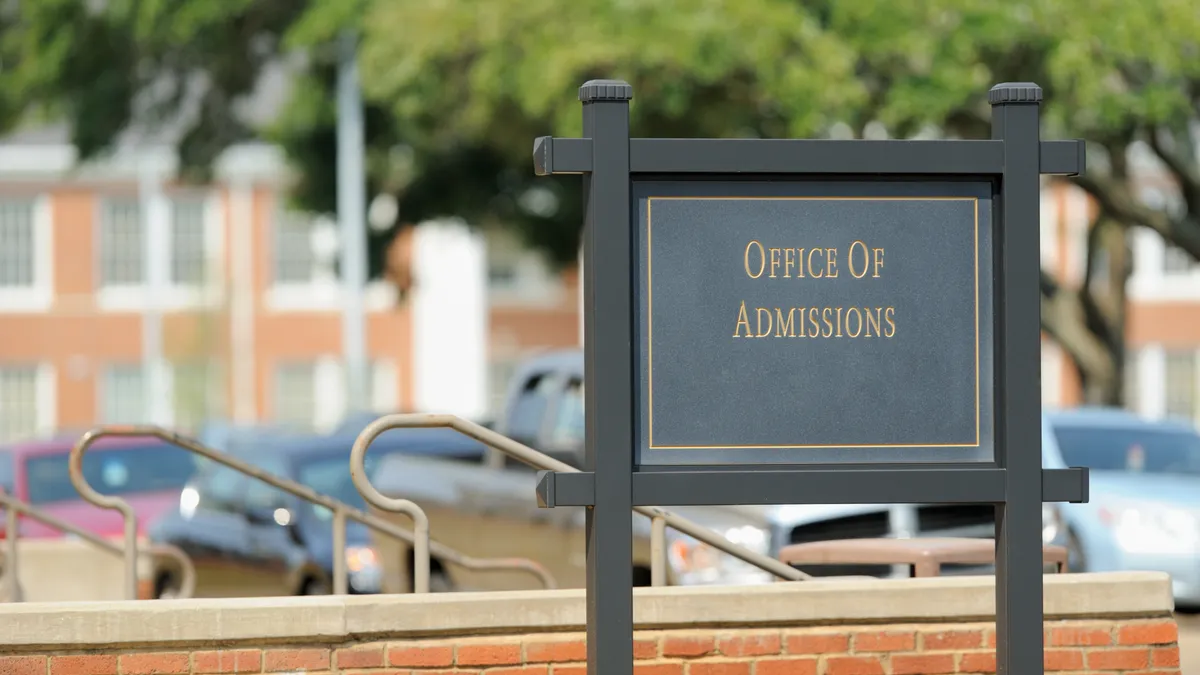It is no secret that there is a gap between the skills employers want and those recent graduates entering the workforce possess. According to a recent survey by the Business Roundtable, 95% of American CEOs believe their companies suffer from a skills shortage.
Business Roundtable Vice President for Education and Workforce Dane Linn believes the reality is the nation’s educational system “is failing to keep pace with the demands of the global economy,” despite acknowledged improvements, and said “the long-term negative impacts of this skills gap on workers, families, businesses, governments and the economy are potentially far-reaching.”
Career and Technical Education (CTE) provides “an opportunity to bridge that gap, by providing real world, hands-on exposure to fields to students while they are still in school and can choose a pathway to a growing career,” said Linn.
As the nation continues to discuss the implementation of the Every Student Succeeds Act (ESSA), CTE is beginning to emerge as a key component of American education.
Sean Lynch, legislative and public affairs manager for the Association for Career and Technical Education, said ESSA “puts this really unprecedented level of support into CTE” that has pushed educators to consider CTE as “part of a well-rounded education,” reframing the conversation towards considering CTE as more than just optional vocational training.
“Historically, CTE has been seen as the dumping ground for students who are not attending college,” Linn said. “Today’s CTE programs differ from their predecessor in at least three distinct ways: they help bridge the skills gap by focusing on skills instead of content alone; they provide exposure to careers at an earlier age; and they cover more fields than one would think — from STEM jobs, to finance, to architecture and manufacturing.”
Some of this translates to higher collaboration with both K-12 districts and higher education systems to strengthen the existing educational system. Lynch and Linn said the conversation needs to shift to ways CTE can supplement, not supplant educational goals in states and districts.
Increased emphasis on CTE as a complement to higher education will help “ensure students who attend college end up in a career where they have the competencies to succeed,” said Linn.
“Getting a four-year degree is not the end of your life. You still have to get a career,” Lynch added.
“There is critical need to increase the number of individuals who obtain a postsecondary credential,” said Linn. “Equally important is the need for us as a country to find ways to make it more affordable for a student to attend and complete college. But, it’s also important that we create a transparent system so students are making informed choices. The goal is for students to make informed choices based on their interests, strengths and labor market data.”
There’s no one-size-fits-all approach to gauging market needs — “a lot is driven by the state or market you live in,” Lynch said. But some common threads, like encouraging dual and concurrent enrollment, placing a greater emphasis on improving career guidance and counseling, and including a broad range of perspectives from K-12 and higher ed make CTE efforts successful.
Linn suggested states and districts “work directly with employers to determine if the programs they’re offering reflect the local and regional economy.”
In California, there is broad bipartisan support for investing heavily in CTE. The state has two grant programs, the Career Pathways Trust and the Career Technical Education Incentive Grants, which both provide partnerships and collaboration with higher education.
“CTE fits perfectly with the overall goal and mission of the California Department of Education, which is preparing students for 21st century careers and college,” said California Department of Education Chief Information Officer Peter Tira.
“The governor has provided more and more money in every budget to expand the programs as well and make sure they are of the highest quality. CTE is a top priority of State Superintendent of Public Instruction Tom Torlakson,” he added.
Lynch said it’s key to put a “strong emphasis on bridges between secondary and postsecondary education that are really well-articulated,” which is something California has sought to achieve. Not only is there strong government support for CTE programs in the state, the university systems and local community colleges “are sometimes deeply involved in the development of these programs,” Tira said.
This helps avoid duplication in courses when students choose to continue their education. It also helps “make a pathway more seamless so [students] can get more done once they’re [enrolled] in postsecondary” education, Lynch said.
Tira said the state’s university systems “are sometimes deeply involved in the development of these programs.”
The resulting courses, which combine “rigorous academic work with practical-hands-on experience,” help “captivate, engage and motivate students often in ways that traditional courses may not. They can give students a purpose, some ideas into what careers they may want to pursue in life, and they help students stay on track to graduate,” he said.
But CTE conversations do not necessarily necessitate a conversation about higher education. Linn and Lynch agreed the changing economy and need for many high-demand, high wage jobs in growing fields means that not everyone needs to go to a four-year college.
“The reality is that not every job requires a college degree,” Lynch said, adding there needs to be “a shift in the way people think about the post-secondary options that people see … and the way that we define success.”
What is needed, Linn said, is “high quality instruction that leads to an in-demand job” that will leave prospective employees with skills that are “relevant to employers.”
That’s part of the idea behind a Virginia proposal to revamp high school education to better prepare students for the future. Two widely-supported bills in the state’s legislature would transition high school education in the state from the current model to one that splits students’ 9-12 grade years into two separate tracks: one group of core requirements in the freshman and sophomore years, followed by two final years that focus on take different avenues to graduation, based on students' preferences.
For their junior and senior years, students would choose between a traditional four-year college prep track, prep for two years of community college or work towards a certificate to go straight into the workforce with the help of partnerships and internships from local businesses.
Linn said increased partnerships with local business to provide internships and other forms of work-based learning will be key to the success of CTE in the future.
“It’s important for employers to send clear signals on the demand, both in jobs that are most difficult to fill and the competencies students need in order to succeed in the workplace,” he said. Not only that, “employers have an opportunity to expand existing efforts to provide work-based learning opportunities such as internships and apprenticeships. Through these experiences, students have an opportunity to apply the classroom learning."
Additionally, Linn said, “employers have an opportunity to increase the pool of future employees that are prepared for the workforce and also meet their current needs.”
If there is to be significant progress made in closing the nation’s skills and innovation gap, input from all sectors involved — industry as well as schools at both the K-12 and postsecondary level, including traditional baccalaureate institutions, community colleges and technical and vocational schools — will need to collaborate to arm future workers with the skills they need to be successful.
Would you like to see more education news like this in your inbox on a daily basis? Subscribe to our Education Dive email newsletter! You may also want to read Education Dive's look at how test-optional college admissions can increase transparency.
















